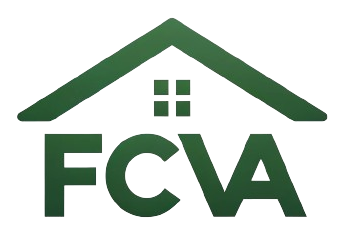Have you ever wondered what legal disclosures you need to consider when selling a home that’s seen better days? If your house is in bad condition, the selling process can feel daunting and fraught with potential pitfalls. However, understanding the legal requirements surrounding disclosures can help you navigate the sale with confidence.
The Importance of Legal Disclosures
When you decide to sell your house, you’re not just handing over the keys; you’re also responsible for providing accurate information about its condition. Legal disclosures exist to protect both you and the buyer, ensuring that the transaction is transparent, fair, and aboveboard. This is particularly crucial when the property has defects or issues. Being forthright about the condition of your home can shield you from future litigation and provide peace of mind to both parties.
Understanding What Legal Disclosures Are
Legal disclosures are formal statements you must make regarding the condition of your property. Depending on your location, these disclosures will vary, but they commonly include information about defects, environmental hazards, and any renovations or repairs that may influence the buyer’s decision. It’s not just about revealing problems; it’s about providing a full picture of what they’re about to purchase.
1. Property Condition Disclosure
One of the most critical pieces of disclosure is the property condition itself. This means you must inform potential buyers of any issues your house has, which could range from leaky roofs to mold in the basement. Being upfront might seem challenging, but it is essential. Not only does it comply with the law, but it also demonstrates that you’re an honest seller. It sets the tone for a trustworthy transaction.
What to Include in the Condition Disclosure
- Structural Issues: Any problems with the foundation, walls, or roof.
- System Malfunctions: Issues with HVAC systems, plumbing, or electrical systems.
- Visible Damage: Broken windows, doors that don’t close properly, and more.
- Pests: Evidence of rodent or insect infestations.
Providing as much detail as possible in this section is vital. If significant repairs are needed, state clearly how they affect the home’s livability and value.
2. Lead-Based Paint Disclosure
If your home was built before 1978, federal law requires you to disclose the presence of lead-based paint. This toxic substance can pose serious health risks, especially to small children and pregnant women. Buyers must be informed of the potential hazards, and they have the right to have the property inspected for lead before finalizing the purchase.
Steps for Lead-Based Paint Disclosure
- Provide a Lead Warning Statement: This should notify buyers of the risks associated with lead paint.
- Supplemental Disclosure Form: Utilize the EPA’s pamphlet, “Protect Your Family from Lead in Your Home,” to inform potential buyers.
- Encourage Inspections: Help buyers feel empowered by suggesting they conduct lead-based paint inspections, particularly if they have young children.
3. Environmental Hazards
Beyond lead paint, environmental hazards can be a significant concern. You must disclose the presence of any hazardous materials such as asbestos, radon, or mold. These substances can have long-term effects on health and safety, which means potential buyers need to be aware before proceeding.
Common Environmental Hazards to Disclose
- Asbestos: Often found in older insulation and flooring.
- Mold: Any visible signs of mold, especially in damp areas, should be reported.
- Radon: A naturally occurring radioactive gas that can seep into homes, which may require testing.
Just like other disclosures, being honest about environmental hazards can not only protect you legally but also establish trust with the buyer.
4. Previous Repairs and Renovations
If you’ve made repairs or renovations, you should disclose them too. Even if you feel certain these changes were done well, it’s important to be transparent about what you’ve worked on in your home. This disclosure can cover a broad range of topics, including updates to the plumbing, electrical work, roofing, or even cosmetic improvements.
Elements to Include in This Disclosure
- Scope of the Work: Detail what repairs or renovations were completed.
- Quality of Workmanship: If you hired professionals, note the companies and any warranties that were issued.
- Permits: If applicable, disclose whether permits were obtained for the renovation work, which could indicate adherence to local codes.
This transparency minimizes the chances of unpleasant surprises coming up during inspections or appraisals.
5. Neighborhood and Community Factors
Your home doesn’t operate in a vacuum; it exists within a community. Be sure to disclose any factors affecting the neighborhood that could impact a buyer’s decision. This may include crime rates, upcoming developments, or significant changes in zoning laws.
Possible Community Factors to Disclose
- Crime Statistics: If your area has a higher-than-average crime rate, inform potential buyers.
- Nearby Developments: Major construction projects can be a draw or a deterrent.
- Noise Factors: If you live near busy streets or railroad tracks, it’s essential to mention how this might affect their living experience.
While some of these characteristics might not be entirely negative, being upfront helps potential buyers make informed choices.
6. Financial Obligations
You’ll need to discuss any financial obligations that come with your property, including any liens, easements, or mortgages. These aspects can affect the property’s value and the buyer’s experience. Providing this information up front will save both parties from stressful surprises down the line.
Key Financial Obligations to Include
- Mortgages: Full disclosure of any outstanding mortgages will aid buyers in understanding their potential equity.
- Liens: Any liens against the property could affect the sale and must be disclosed.
- Easements: If a neighbor has access rights or if there’s a shared driveway, this must be clearly stated.
Complete honesty in financial matters will pave the way for a smoother transaction and more reliable negotiations.
7. Disclosures Specific to Your State
Every state has unique laws regarding what needs to be disclosed during a home sale. Familiarize yourself with these legal requirements and ensure you comply with them fully. Not meeting these criteria could result in legal consequences or even voiding the sale.
How to Stay Compliant
- Consult a Real Estate Attorney: They can guide you through the specific disclosures required in your state.
- Seek local regulations: Familiarize yourself with your state’s real estate commission requirements on property disclosures.
- Settle for Accuracy: Ensure all disclosures are not only complete but accurate to guard against legal repercussions.
Finally, knowing the specific requirements tied to your local area will give you confidence when preparing your disclosures.
Conclusion
Selling a house in bad condition can feel like an uphill battle, but understanding and properly executing your legal disclosures can simplify the process. The key takeaway is that honesty and transparency not only protect you legally but allow for a smoother transaction overall. By being upfront about the condition of your home and compliant with all requirements, you establish trust with potential buyers, making the selling experience much more positive.
Remember, while preparing these disclosures may seem like a tedious task, they’re essential for protecting both your interests and those of your buyers. Selling your home can be a new beginning, and with the right approach, you can step forward into your next chapter with confidence.
Ready to sell your house fast in Virginia? FastCashVA makes it simple, fast, and hassle-free.
Get your cash offer now or contact us today to learn how we can help you sell your house as-is for cash!
Disclosure: As an Amazon Associate, I earn from qualifying purchases.



